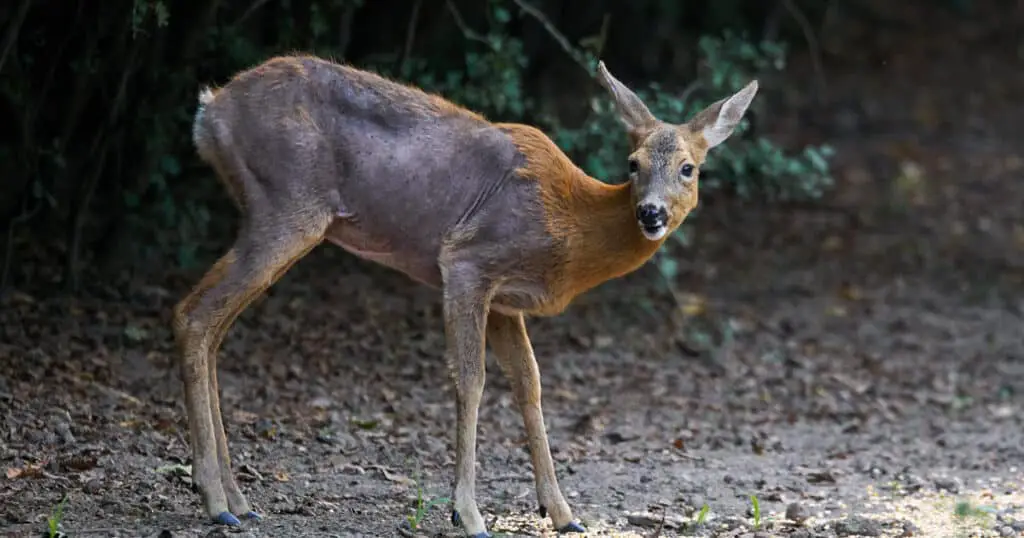Most of us have heard the expression “a mangy dog,” but we don’t usually think of mange as something that affects deer. But it certainly does. Like other animals, whitetail deer (and other deer species) may end up with mange. Keep reading for our complete guide on mange on deer.
Most of us know that mange causes skin irritation and hair loss, but did you know it may lead to dangerous infections?
Here’s what we’ll learn about in today’s article:
- Causes of mange on deer
- Symptoms
- Can a deer survive mange?
- Is mange contagious in the herd?
- How do you treat mange in deer?
- Can humans get mange?
- What should you do if you think a deer has mange?
- Hair-loss syndrome in deer
- Can pets get mange from deer?
- Do deer have ticks?
Causes of Mange on Deer
Demodex mites cause most cases of mange in deer. This kind of mange is called demodectic mange.
What you might find surprising is that these mites are found on many deer that never show signs of mange.
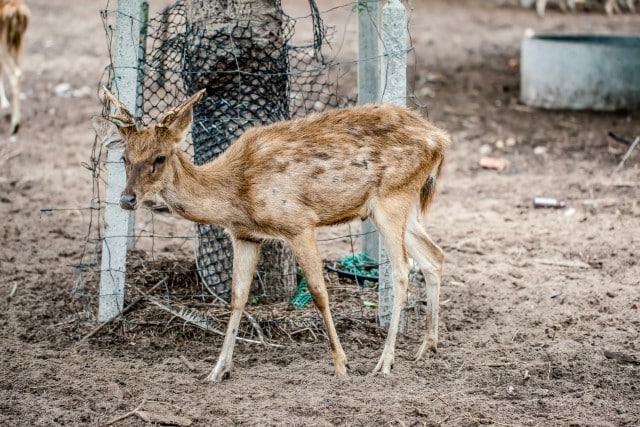
How is that possible? Well, these parasites usually don’t have a noticeable effect on deer with well-functioning immune systems. It’s rare for mange to become a problem for several members of the same herd.
A deer with a compromised immune system (for example, caused by disease or poor nutrition) will be prone to mange caused by Demodex mites.
If one deer has Demodex mites, they will probably spread to the other animals.
Two other kinds of mange are sarcoptic mange and netoedric mange. Sarcoptes scabiei causes the former, while Notoedres centrifuga causes the latter.
Mange Symptoms
Hair loss (alopecia) is one of the symptoms of mange.
There will also be lesions full of pus, also known as pustules. These are infected skin glands or hair follicles that have been overwhelmed with Demodex mites.
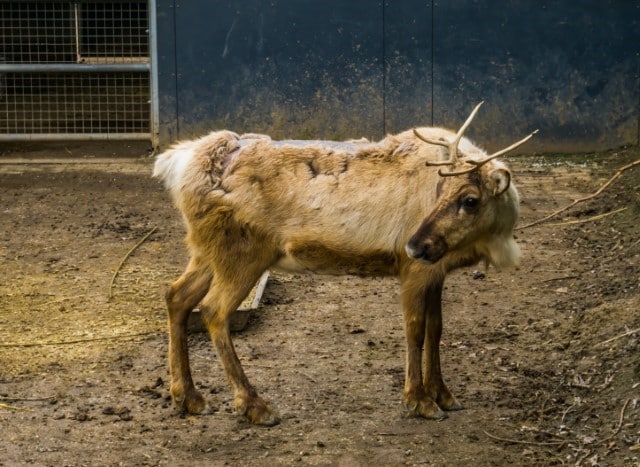
Itching is another symptom of mange, as is scabbing and roughening of the skin.
Mange may cause skin lesions and thickening. This is often caused by how the deer try to scratch and rub their skin in response to the constant itching.
Mange sometimes causes enough skin irritation that it results in a bacterial infection.
Can a Deer Survive Mange?
Yes, mange is not itself a deadly disease.
The fact that deer who have mange often die is a result of secondary infections or other health problems that depress their immune systems.
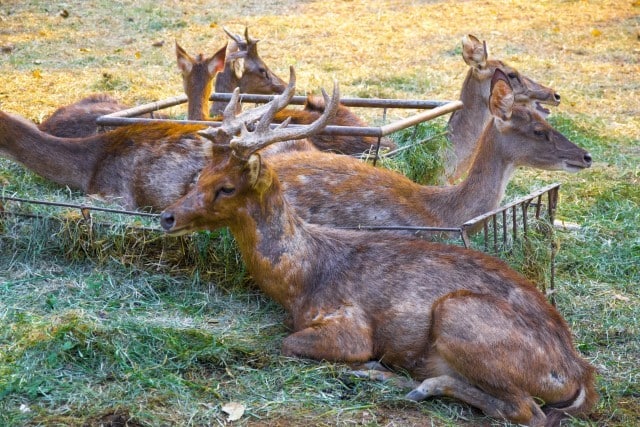
That is why, technically speaking, it may be safe to eat the meat of a deer with this disease. However, you should try to avoid it. Why?
It’s because deer with visible mange usually have other health problems, and these may be serious and potentially affect the meat, making it unsuitable or unsafe to eat.
Is Mange on Deer Contagious?
The mites that cause mange spread easily from animal to animal. For example, they get into the bedding areas and end up hopping on other members of the herd.
However, as we discussed earlier, most deer with strong immune systems may carry these mites without any symptoms of mange.
Deer Mange Treatment
For obvious reasons, deer in the wild aren’t given treatment for their mange.
If there are mange cases on a deer farm, however, the farmer would treat them with an appropriate medication (for example, Ivermectin).
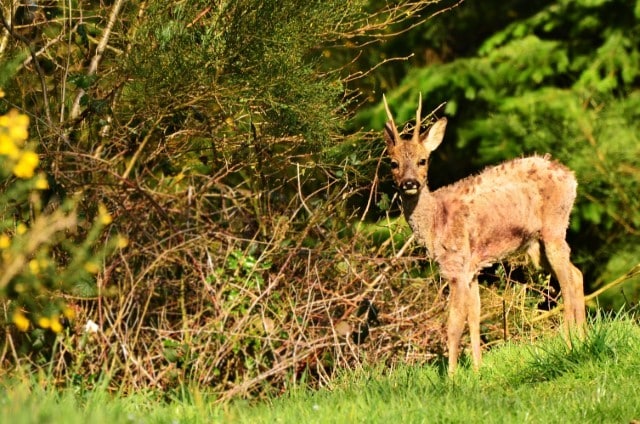
When it comes to trying to reduce the number of deer with mange in the wild, some hunters feel that reducing population density can help.
After all, it’s easier for mites to spread from deer to deer when there are higher numbers of animals in the group.
Can Humans Get Mange?
Yes, humans can get mange. However, it’s not usually caused by the mites that cause mange in animals.
Instead, human mange is usually caused by the scabies mite. Scabies mites jump from one person to another.
That is why you probably wouldn’t catch mange from touching an animal with that condition. It is technically possible, though.
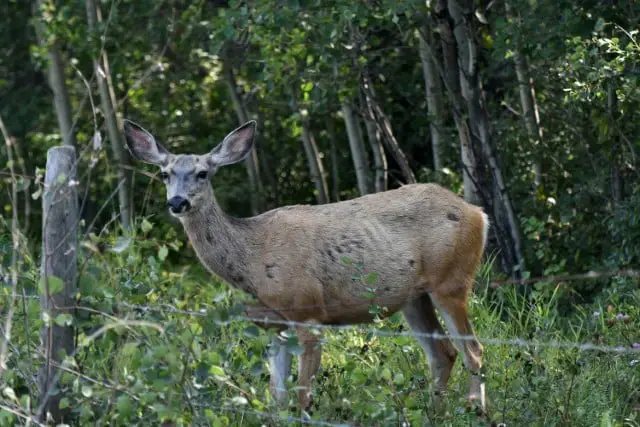
Humans suspecting they have any type of mange must seek medical attention right away.
This condition may lead to secondary (for example, bacterial) infections, and a dangerous situation could result if these aren’t properly treated.
Mange in humans requires prescription medication.
Symptoms of mange in humans may include:
- Redness
- Intense itching (especially at night)
- Rashes
- Blisters
- Bumps
- Tracts (mite burrows)
In some cases, you may have the mites on your skin for a while before having any noticeable symptoms. In fact, it may take as long as a month for you to notice mange symptoms.
Mange symptoms in humans most often show up in places where there are skin folds. For example, you might notice them most in the armpits or finger webbing.
What Should You Do if You Think a Deer Has Mange?
Hunters occasionally think a deer has mange when it’s just going through normal molting. The animal is more likely to have mange if you notice skin irritation and the animal appears weak and distressed.
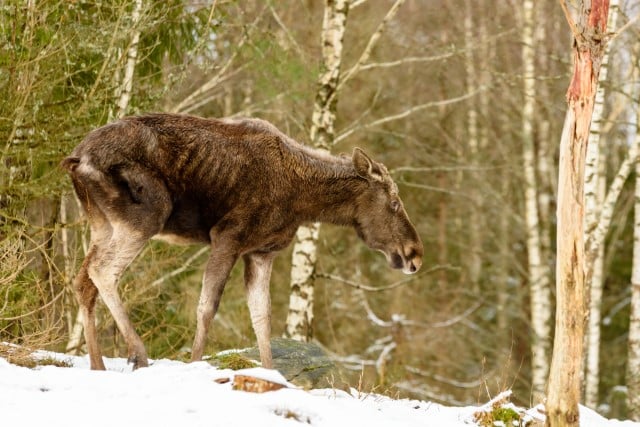
If you think you have seen deer in the area that have this condition, you should notify wildlife authorities in your state.
If for any reason you ever touch a deer that has mange, wash your hands immediately. It’s also best to shower, wash your hair, and of course, change your clothes. Wash your dirty clothes in hot water and soap.
Hair-Loss Syndrome in Deer
While mange causes hair loss, it’s not the same as a specific condition called deer hair loss syndrome (DHLS).
This condition was first found in 1995 in the western part of Washington State, and it happened as a result of a Eurasian lice infestation.
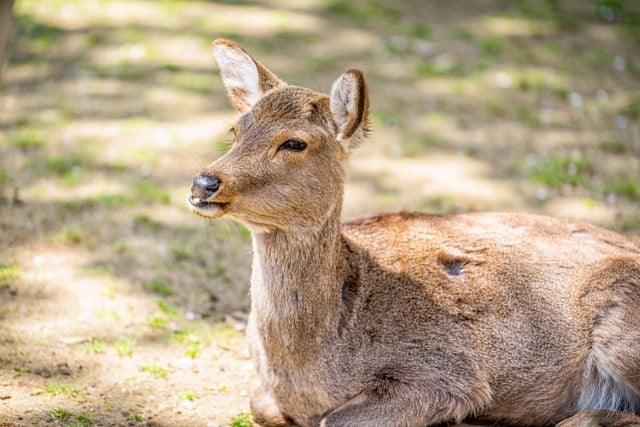
With DHLS, an early symptom may be patches of the deer’s coat turning extremely dark, sometimes appearing black.
After that, this hair sometimes turns white or a yellowish shade. In other cases, the hair in these patches will completely fall out.
Eventually, a deer with DHLS will behave in a markedly lethargic way. When it comes to physical appearance, the animal will probably look thin, even emaciated. Of course, large amounts of hair loss are another significant feature.
While lice infestation is the most common cause of DHLS, a more severe version can result from a muscle worm infestation. Another cause of severe hair loss in deer is a malfunctioning immune system.
Can Pets Get Mange from Deer?
If you live in a rural area or even a suburban one with large deer populations, and you have a pet, perhaps you’re worried that it may come in contact with a deer and catch mange.
To help avoid this, make sure your dog or cat doesn’t come into close contact with deer.
If you have seen deer coming onto your property and your pet is curious and friendly enough to approach it, take steps to stop the deer from coming into your yard.
For example, avoid including plants in your garden that attract deer and that deer like to eat.
You could also fence your property. Deer are able to jump as high as eight feet, so keep this in mind.
Do Deer Have Ticks?
Yes, deer often have ticks and these insects may carry Lyme Disease. Deer can’t get Lyme disease, but deer and ticks do have a unique relationship which helps perpetuate the disease.
Summer is the time of year when hunters are most at risk of being bitten by ticks that may give them Lyme Disease.
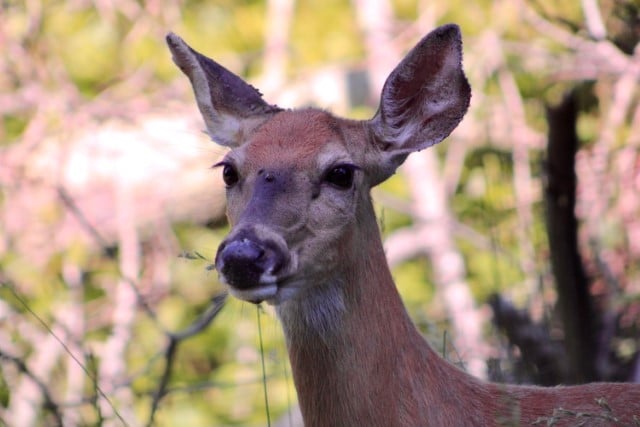
The ticks that feed on deer blood are called “deer ticks.” Like other ticks, these insects live in areas with a lot of wooded spaces, with brush and grasses.
If you’re a deer hunter, be cautious about hunting in the summer when ticks are most active.
Now You Understand Mange on Deer
As we’ve seen here, deer sometimes suffer from this condition. This problem is caused by mites and only shows up in deer with weakened or compromised immune systems.
If a deer has a depressed immune system, it will probably show symptoms as its body cannot fend off the effects of the mites.
While mange itself doesn’t kill deer, it may lead to dangerous skin infections and adversely affect a deer’s overall health.

